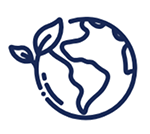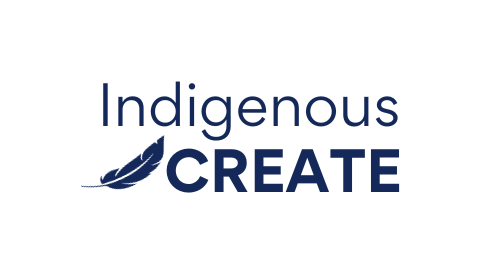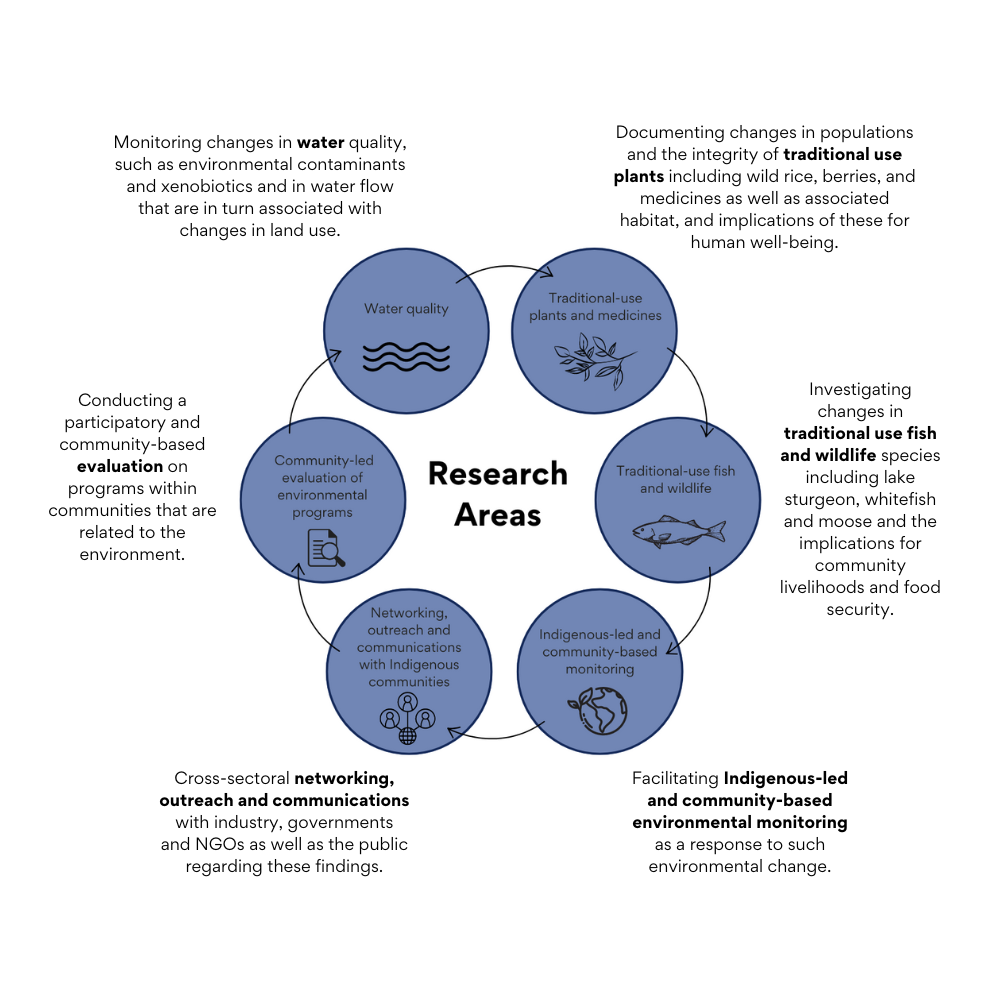Mi’kmaw Elder Albert Marshall refers to as “learning to see from one eye with the strengths of Indigenous ways of knowing and from the other eye with the strengths of Western ways of knowing and to using both of these eyes together”. This will enable us to better understand the implications of a diversity of stressors including climate change, hydropower, mining, and wastewater in ways that serve the learning and employability needs of Indigenous trainees. This research will be holistic in approach and includes both the environment and community wellbeing. It will center on the environmental sector (natural resources, energy, and the environment).

Water is of critical cultural importance to First Nations communities and continues to play an essential role in ceremony and teachings. Yet threats to water continue to grow and are associated with changing land use and climate. The nature of the threats varies according to scale. At the global level, climate change has emerged a century-defining issue, and many efforts exist to hold governments accountable through policy reform. At the community scale, climate change is often manifest as variability in climate, changes in precipitation and temperature. In turn, threats to potable or drinking water in First Nations communities have been a long-standing threat across Canada whereas many such problems remain undocumented. Most, if not all, the communities reflected in this program have been affected by hydro dams. The implications of these operations for First Nations and Metis communities are dramatic, especially as related to changes to water bodies, which in turn underlie changes to plants, fish and wildlife, and human wellbeing. Smaller-scale hydro and multi-purpose dams have similarly adverse impacts on First Nations communities in NW Ontario. Such changes interact with smaller-scale impacts from intensive resource extraction industries notably including mining, and deforestation in both provinces. The resulting changes in flow and water quality are in turn associated with the decline of local wetlands and the emergence of toxic blue-green algae or cyanobacteria as a threat to wildlife (e.g. moose) and human health.
Our work here will focus on such changes and their underlying causes and include chemical contaminants and xenobiotics and changes in cyanobacteria populations as indicators of decline. Such changes and their implications will also be evaluated through Anishinaabe ways of knowing. These declines aggravate existing and often inadequate local water treatment and management, which in turn aggravates community concerns regarding the safety of water for consumption and recreation.

Changes in water quality have substantial implications for plants and ecosystems. Our work here will focus primarily on traditional use plants, and where appropriate medicines. Such plants (e.g. blueberries, wild rice or manoomin) and medicines (e.g. pine sap, flagstaff or wihkes) all play critical roles in the diets and wellbeing of most First Nations communities. Yet changes in water levels associated with hydro dams cause declines in population and compromise access to these plants. Concerns over the use of herbicides in utility corridors (e.g. BiPole III, Manitoba Minnesota Transmission Project) are widespread and undermine the local confidence in these foods as well as their role as medicines. This in turn undermines the culture, language and ceremony regarding their use. Our work here will focus primarily on evaluating the impacts of changes in environment for these populations, mapping these stories and changes in occurrence using GIS and in particular embedding these spatial changes with videos, photos and stories. How and to what degree these changes in water levels contribute to the decline in shoreline will in turn be documented and mapped with GIS. Traditional use plants will also be tested for contaminants as requested by community. Workshops will be created that enable knowledge keepers and Elders who work with medicines to share their knowledge with one another and to affirm these ways of healing in the context of COVID-19 and beyond.

Changes in water levels and treefall associated with the erosion of shorelines adversely affect both fish and wildlife. South Indian Lake was once the third largest freshwater fishery in North America and supported a wide diversity of livelihoods. This fishery and others like it in surrounding communities on smaller lakes and on Lake Winnipeg have been in decline since the construction of the Churchill River Diversion in 1976. The CRD has played havoc with whitefish and pickerel populations to the point that few Indigenous fishers remain. There are widespread concerns regarding levels of mercury and other trace elements that bioaccumulate in these traditional foods. Changes in fish populations as well as the underlying factors that give rise to these changes will be documented using both biology and Indigenous science. The nature of and implications of these declines for livelihoods will also be examined. Despite this decline in productivity, alternatives will be developed that focus on the direct marketing of fish that are still caught and complementing this with value-added products. The potential of these products will be evaluated and promoted with retailers in Winnipeg and Thunder Bay. Implications of these changes for diets and wellbeing will also be assessed.

The changes in aquatic systems and the implications for plants, fish, and wildlife will become clearer through the proposed research focusing on changes and he underlying causes regarding water, plants and animals. These changes and the need to document them in ways that are useful to communities and when negotiating with decision-makers have given rise to several Indigenous-led monitoring programs, notably including those associated with the Guardian Program. A number of communities (e.g. Tataskweyak Cree Nation, Norway House First Nation, Swan Lake First Nation) have been monitoring such changes using proactive approaches grounded in both NSE and Indigenous science and are now even operating at regional scales. Thus, the Grand Council of Treaty #3 is now setting up projects in and across many of its 28 member communities. The implications of these initiatives for added understanding will be documented as will the implications of these programs for local learning in schools, traditional food diets and decision-making within communities. Moreover, approaches that support the use of these data for negotiations with industry and governments will be documented.

Using an Indigenous-led approach to networking, outreach and communications creates many opportunities to increase the relevance and impact of this work and training opportunities for students. By holding multi-stakeholder workshops that engage public, private and non-profit sectors we can build on the working relationships that evolve out of student training and the governance of our program. Such approaches build on the momentum reflected in the monitoring programs and other community-led approaches to environmental management and will act as a case study that other agencies can learn from and refine.
This network also represents an effective way of sharing outcomes arising from this program and more generally for communities and NGOs to share their concerns with industry and government. This has the potential to build awareness and trust amongst all participants as well as facilitate the adoption of the data that arise from these projects in decision-making at all levels of government.

The processes underlying, and the outcomes associated with environmental programs that are currently, and have occurred in Indigenous communities. This includes examining if programs have been successful, and in what ways, evaluating gaps in programs, what best practices exist, and how program development may be improved upon. This evaluation will be done in a participatory and community-based manner so that it reflects community priorities and views.

